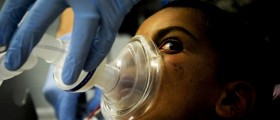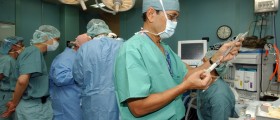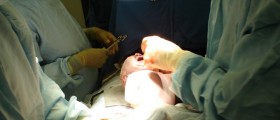
What?
A post-epidural headache normally appears between one day and a week following the epidural. Depending on other factors including age and circumstances, people who receive epidural anesthesia have around a one in 500 chance of developing this notorious headache.
Although anyone who receives an epidural for any purpose can get this headache, it is more common after childbirth, perhaps because it is most likely to happen to young women. The headache is caused by a complication is the epidural placement, where too much fluid leaks through the hole in the dura, a bag of fluid in the area where the epidural is placed. This fluid leak reduces the pressure around the brain, which in turn leads to this headache. It is one of the most common side effects of an epidural.
What can you do if it happens to you?
Taking over the counter pain killers can reduce the severity of the headache, and lying flat helps the body heal. It is also recommended that women who have a post-epidural headache make sure they stay hydrated very well. The leak in the dura will heal over the next few weeks. Sometimes, a post-epidural headache is treated with a so-called blood patch. This seals the leak in the dura and usually cures the post-epidural headache within a day. A blood patch does require you to lie in bed for a while, in accordance with doctor's recommendations. Headaches after epidural anesthesia usually do not cause any long term health problems.
- www.nhs.uk/conditions/epidural/side-effects/
- www.nhs.uk/conditions/anaesthesia/
- Photo courtesy of MrArifnajafov by Wikimedia Commons: de.wikipedia.org/wiki/Spinalan%C3%A4sthesie#/media/File:Spinal_anaesthesia.jpg

















Your thoughts on this
Loading...